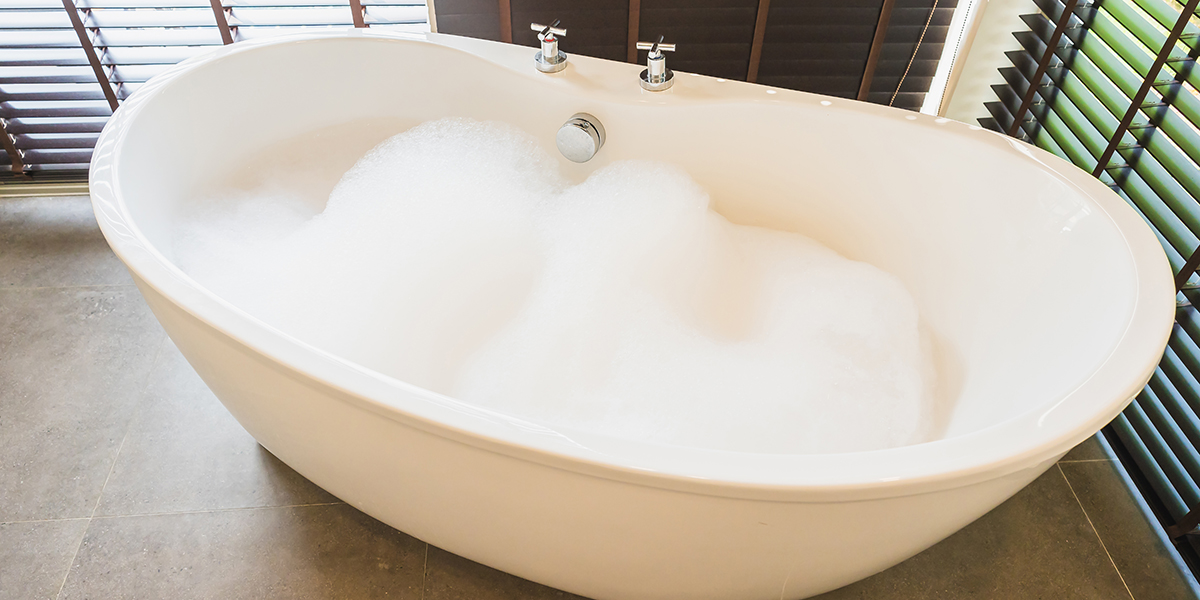We've discovered this great article pertaining to What to Do if Sewage Starts Coming Up Through Your Bathtub listed below on the web and thought it made sense to relate it with you on my blog.

Sewage back-up in the bathtub can be a traumatic and unsanitary issue for any type of homeowner. Not only is it bothersome, but it likewise postures major health dangers and indicates underlying problems with the plumbing system. Recognizing why sewer is showing up through the bath tub is essential for taking suitable action to attend to the issue successfully.
Introduction to the Issue
Common Reasons for Sewer Back-up
Blockages in the Drain Line
One of the most common reasons for sewage backup is an obstruction in the sewer line. This can happen because of the buildup of debris, oil, or international objects in the pipelines, stopping correct circulation and causing sewer to back up right into your tub.
Tree Root Intrusion
Tree origins looking for wetness and nutrients can penetrate drain lines via small splits or joints. Over time, these origins can expand and expand, creating significant damage to the pipelines and leading to sewer backup problems.
Recognizing the Problem
When sewage draws back up right into the tub, it's a clear sign of a problem with the drainage system. The wastewater that ought to be moving away from your home is instead finding its way back right into your space, which can lead to substantial damages and carcinogen.
Potential Causes
A number of variables can add to sewage backup in the tub. From clogs in the sewer line to problems with the plumbing facilities, determining the source is essential for finding an option.
Aging Facilities
Older homes may have dated plumbing systems that are much more vulnerable to rust, fractures, and degeneration. As pipes age, they become more susceptible to leaks and blockages, boosting the possibility of sewer back-up events.
Heavy Rainfall or Flooding
During durations of heavy rainfall or flooding, the sewer system may become overwhelmed with excess water, causing back-ups and overflows. This can lead to sewer backing up right into tubs and other components inside the home.
Signs of Sewer Backup
Foul Odors
Unpleasant odors rising from drains or components, especially in the washroom, might suggest sewer backup problems. These smells are frequently solid and persistent, indicating a problem that calls for immediate interest.
Slow Draining Fixtures
Bath tubs, sinks, and toilets that drain gradually or otherwise at all could be experiencing sewer backup. If several fixtures are affected concurrently, it's likely that the problem originates from an usual point, such as the main sewage system line.
Gurgling Noises
Strange gurgling or gurgling noises originating from drains when water is running in other places in your home are a measure of air caught in the plumbing system. This air build-up can result from sewage backup and must be investigated without delay.
Health Dangers Associated with Sewage Backup
Contamination of Water
Sewage backup can pollute the water in your home, positioning a serious health and wellness danger to you and your family members. Direct exposure to contaminated water can lead to stomach issues, skin infections, and various other illnesses.
Mold and mildew Growth
Wetness from sewer backup can produce suitable problems for mold development in your home. Mold and mildew spores can intensify respiratory system issues and create allergies in delicate people, making punctual cleanup crucial.
Spread of Illness
Sewer contains unsafe bacteria, infections, and bloodsuckers that can trigger a range of conditions, including liver disease, cholera, and gastroenteritis. Entering contact with sewer or contaminated surface areas places you in danger of infection.
Cleaning Up After Sewer Backup
Sanitation Procedures
Thoroughly disinfect and sterilize influenced areas after sewer back-up to eliminate unsafe microorganisms and prevent mold development. Usage ideal cleaning products and safety equipment to guarantee risk-free and efficient cleaning.
Reconstruction of Impacted Locations
Repair any kind of damages to flooring, wall surfaces, or fixtures brought on by sewer backup. Depending on the degree of the damages, you may need to replace carpeting, drywall, or other products to recover your home to its pre-loss condition.
Immediate Actions to Take
Shutting Off Water System
In the event of sewage back-up, it's essential to turn off the water to avoid further contamination and damages. Find the main water shutoff valve in your house and closed it off up until the concern can be solved.
Getting In Touch With a Professional Plumber
Managing sewage back-up is not a do it yourself task. Call a certified plumber with experience in taking care of sewage-related issues to examine the situation and perform necessary repair work or clean-ups.
Staying Clear Of Contact with Infected Water
Till the sewer back-up is settled, avoid contact with infected water to avoid the spread of bacteria and virus. Use safety gear if you should be in the affected area and clean your hands extensively later.
Safety nets
Normal Upkeep of Drain Lines
Arrange regular assessments and maintenance of your sewage system lines to determine and deal with potential issues before they intensify right into major problems. This can consist of clearing out debris, evaluating for tree root invasion, and repairing any broken pipes.
Installing Bayou Valves
Take into consideration setting up bayou shutoffs in your plumbing system to avoid sewage from flowing back right into your home during durations of heavy rainfall or flooding. These shutoffs immediately close when water draws back up, safeguarding your home from contamination.
Correct Disposal of Household Waste
Prevent purging anything apart from bathroom tissue and human waste down the commode to prevent clogs and obstructions in the drain line. Dispose of grease, oil, and other household chemicals effectively to lessen the risk of plumbing troubles.
Why Is Water Backing Up in My Bathtub When I Flush My Toilet?
What to do about a sewer line clog
First, don’t bother with plunging. No amount of plunging will dislodge the clog in a sewer line. The clog is too far away. Plungers are for clogs in the toilet itself, not the sewer line. Plus, the most likely causes of a sewer clog are:
Tree roots Flushed toys or feminine products Grease buildup Those items don’t move easily. And in the case of tree roots, the roots need to be cut out of the pipe and the pipe will need to be repaired.
You’ll need a closet auger. A closet auger is a type of plumber’s snake with a protective cover to keep from scratching the delicate porcelain toilet. If the clog is further down, you may need to remove the toilet or use one of your cleanouts to get to the clog.
We also recommend doing a video inspection of the drain to ensure that the cause of the clog has been completely removed. Otherwise, you could have the same problem again in a few days or weeks.
https://mspplumbingheatingair.com/blog/why-is-water-backing-up-in-my-bathtub-when-i-flush-my-toilet

As an enthusiastic reader on Why is There Sewage Coming Up Through the Bathtub, I thought sharing that excerpt was smart. I beg you set aside a second to promote this entry if you appreciated it. Thanks so much for going through it.
Instant Quote